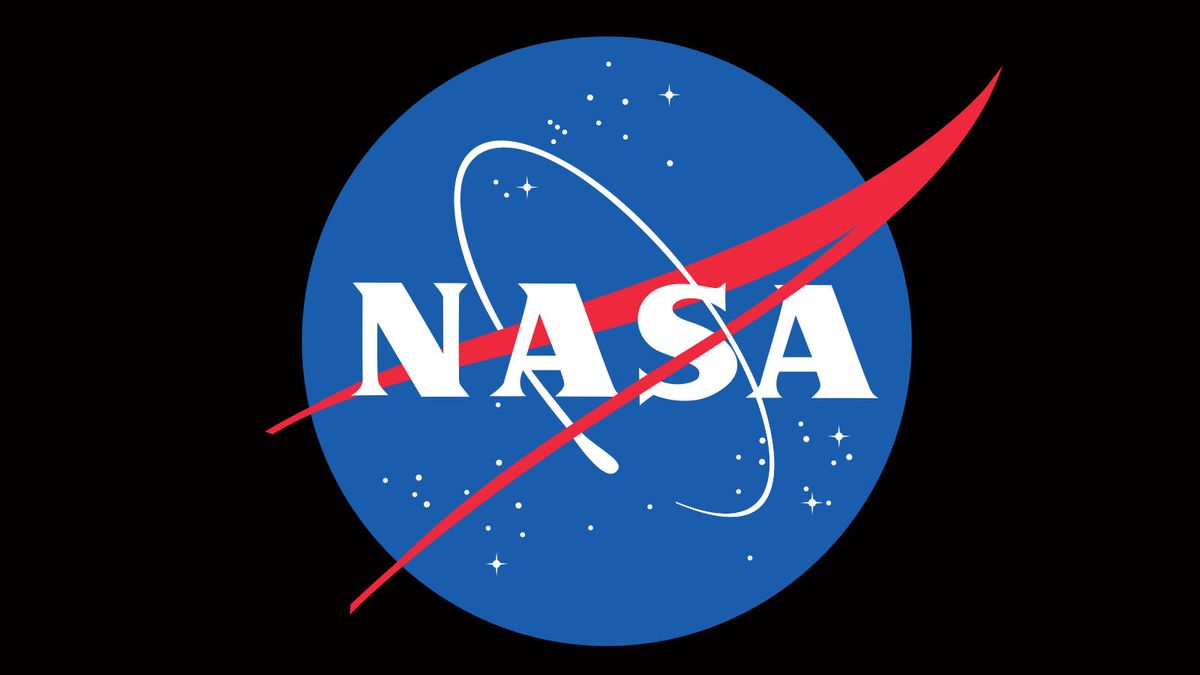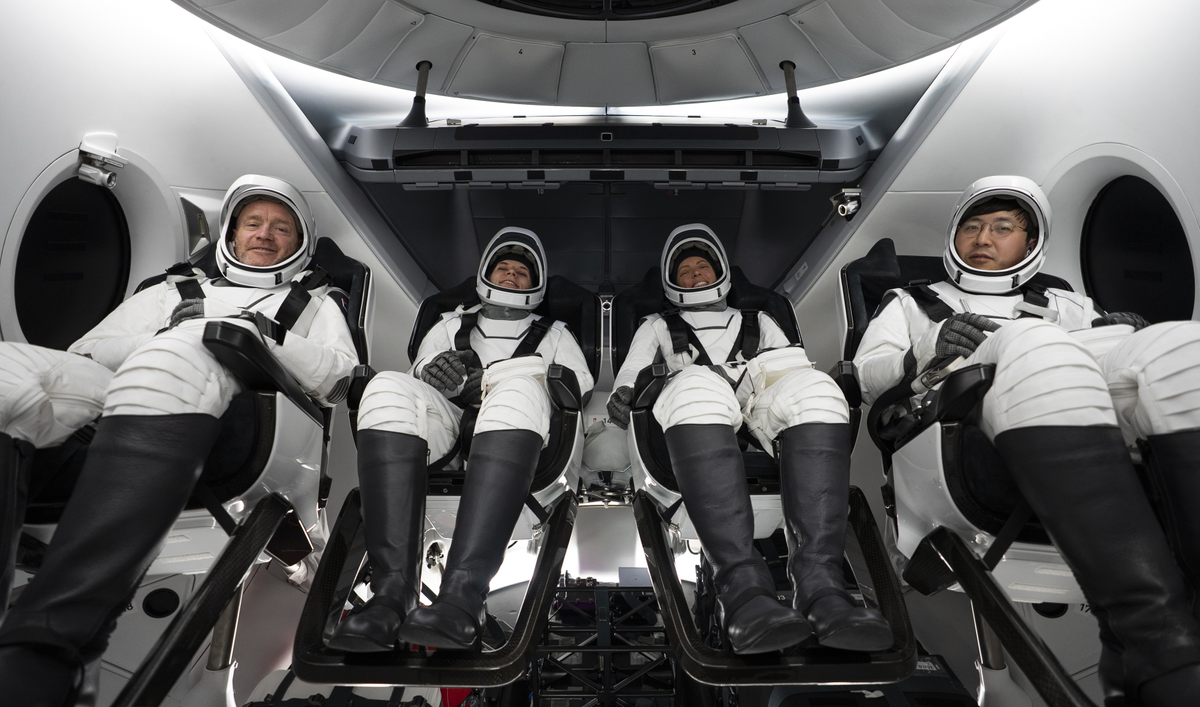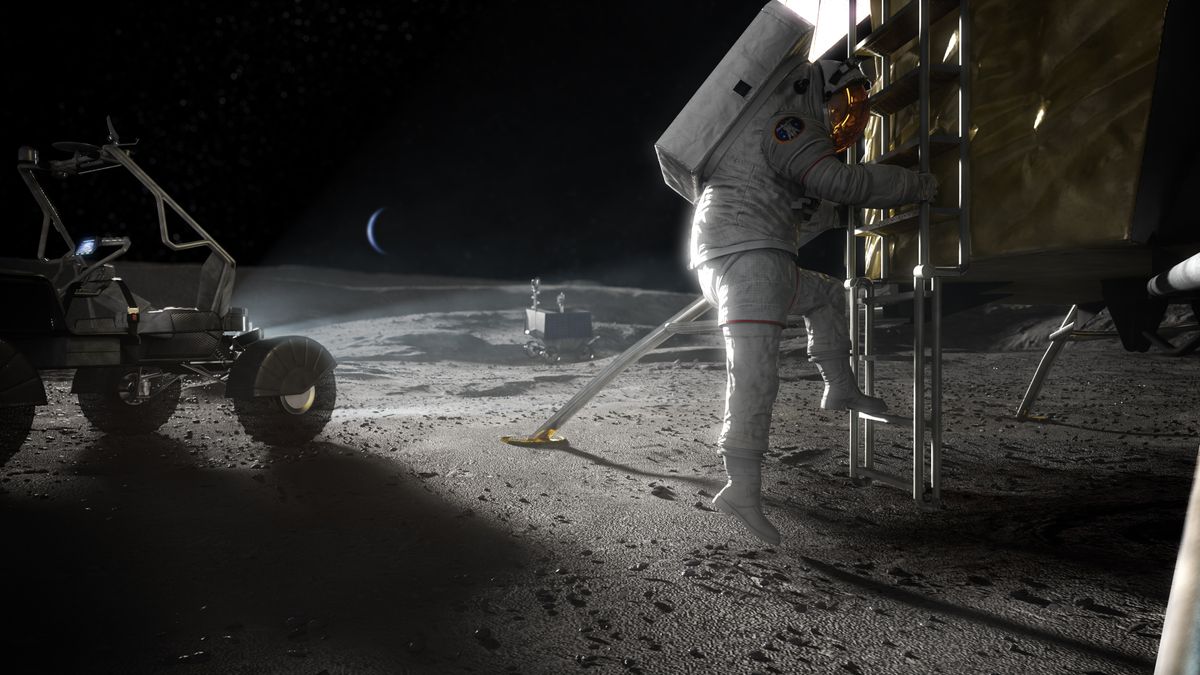Sign up for CNN’s Wonder Theory science newsletter. Explore the universe with news on fascinating discoveries, scientific advancements and more.
A crew of four passengers — led by a cryptocurrency billionaire — is set to launch aboard a SpaceX capsule that will carry them over the Earth’s poles, marking the first time humans have flown such a mission.
The group is slated to lift off from a launchpad in Florida during a 4.5-hour window that opens at 9:46 p.m. ET Monday.
Malta-based investor Chun Wang is financing the mission, which was dubbed Fram2 after a Norwegian ship that carried key expeditions to the North and South poles around the turn of the 20th century.
Wang made his fortune with bitcoin mining operations, and he paid SpaceX an undisclosed sum of money to conduct this mission. Joining him are three polar explorers whom Wang met through his Earth-bound travels: Norwegian film director Jannicke Mikkelsen, German robotics researcher Rabea Rogge and Australian adventurer Eric Philips.
No one on the crew has ever traveled to space.
“My own journey has been shaped by lifelong curiosity and the fascination with pushing boundaries,” Chun said Friday during an audio-only Spaces event on X, the social media platform owned by SpaceX CEO Elon Musk.
The aim of Fram2 is to conduct a unique mission that also pays homage to the quartet’s fascination with polar exploration, following in the footsteps of other unique space tourism trips such as SpaceX’s 2021 Inspiration4 mission.
Fram2 stands out because no humans have traveled directly over the Earth’s poles from space, which requires a flight path that’s far more fuel-intensive than chasing orbits closer to the equator.
The frigid caps of our home planet are invisible to humans on board the International Space Station, for example, which orbits near Earth’s equatorial line. The crewed mission that traveled closest to the planet’s poles to date was a Soviet-era spaceflight called Vostok 6 in 1963.
However, Vostok 6 was flown at a 65-degree inclination, whereas Fram2 will aim for a 90-degree orientation, meaning it will fly perfectly perpendicular to the equator.
During the mission, crew members will offer up their own bodies for research. They are expected to give scientists insight into how they react to weightlessness and adapt to motion sickness — a common symptom reported by astronauts.
Fram2 is expected to spend three to five days in space before returning home with a splashdown landing off the coast of California.
The Fram2 crew poses in this image provided by SpaceX. The group includes, from left, Eric Philips, a polar guide from Australia; Rabea Rogge, a robotics researcher from Germany; Norwegian filmmaker Jannicke Mikkelsen; and Chun Wang, a Chinese-born bitcoin investor who is paying for the whole spaceflight. - SpaceX via AP
‘A notch above gimmick’
While a human spaceflight mission has never passed so close to Earth’s poles, experts who spoke with CNN said that there may not be a huge scientific draw to such an effort.
Dr. John Prussing, professor emeritus of aerospace engineering at the University of Illinois Urbana-Champaign, openly wondered if the mission plan was an April Fools’ joke — noting that SpaceX’s projected launch window stretches into April 1 in Coordinated Universal Time.
“There’s nothing unique to a polar orbit, (and) the science advantages are kind of overblown,” Prussing noted as evidence for his skepticism about this flight.
(CNN verified the authenticity of SpaceX’s flight plans with the Federal Aviation Administration, which licenses commercial rocket launches.)
Ultimately, the value of Fram2 may be more about the thrill of the endeavor, gathering health data, and taking a step forward in making private space missions more common, other experts noted. In addition to being first-time space travelers, the Fram2 crew members all come from backgrounds that are atypical for astronauts.
“This is a private mission. You need something to say that’s different and exciting about it,” said Dr. Christopher Combs, associate dean of research at the Klesse College of Engineering and Integrated Design at the University of Texas at San Antonio.
“It’s interesting that nobody’s ever actually done a true polar orbit,” Combs added, “and it’s great that we’ve got commercial providers that are making space travel increasingly routine.”
In his mind, Combs said, flying a human spaceflight mission around the poles is “a notch above gimmick, but not exactly a groundbreaking milestone.”
Evolving research
Every mission that carries people into space offers a chance to observe how the journey affects human physiology.
And the Fram2 crew will seek to expand on some research spearheaded by academics and the private sector during previous commercial missions to orbit — including the 2024 Polaris Dawn mission.
All four Fram2 passengers will undergo the same MRI scans that the Polaris Dawn crew did. This research aims to expand scientists’ understanding of how stints in microgravity, which is known to shift fluids in the brain, affect astronauts.
The team behind the MRI study is not ready to reveal findings from the Polaris Dawn mission last fall, according to Dr. Mark Rosenberg, a neurologist at the Medical University of South Carolina in Charleston. But an overarching goal of the analysis is to learn whether brain changes can occur for people who spend days — rather than months — in space.
Rosenberg is also part of a team collecting data about astronauts’ sleep patterns in collaboration with Oura Ring, which developed a wellness-tracking device that can be worn on a finger. The work will build on extensive research NASA has conducted with its astronauts on the ISS.
“I certainly think that REM (sleep) is going to be disrupted,” as well as certain deep sleep phases, in the Fram2 crew, Rosenberg told CNN.
There are a couple reasons why: “One, your body isn’t used to being in microgravity. And so for that reason, it probably is challenging for it to get comfortable at first,” Rosenberg said. “The second reason is that constant bombardment of visual stimuli from the orbit. A day in orbit is 90 minutes, and so that circadian dysregulation is definitely going to play a role with how you’re able to sleep.”
The “day” Rosenberg refers to is how often astronauts experience a sunrise and sunset. From the vantage point inside a space capsule whisking around in Earth’s orbit, the phenomenon can occur more than a dozen times in a 24-hour period.
A SpaceX Falcon 9 rocket and Dragon spacecraft set to carry the Fram2 mission are rolled out to the launchpad in Florida. - From SpaceX
Motion sickness
Also among Fram2’s health-related investigations will be a look at how the crew might respond to space adaptation syndrome — a potentially debilitating form of motion sickness that has affected more than 60% of astronauts.
The nausea can set in almost immediately after reaching orbit, where astronauts remain weightless, and can take days to dissipate, a troubling proposition for short-term spaceflights such as Fram2.
“It could impact their ability to perform as well as they otherwise would,” said Torin Clark, an associate professor of aerospace engineering sciences at the University of Colorado Boulder, who is leading the motion sickness research.
Astronauts experiencing extreme nausea may inject themselves with anti-motion sickness drugs, but the medications can leave them tired and groggy for hours, potentially affecting how well they can use their short time in space.
Clark also led similar research during the Polaris Dawn mission. He noted that half of the crew experienced symptoms of space adaptation syndrome during that journey.
The goal with expanding data collection on this flight, he said, is to better understand the ailment — perhaps leading to superior treatments.
Closing ‘the gender gap’
Separately, the Fram2 crew will be involved in novel research spearheaded by a British tech startup, Hormona. The company said it has developed a urine testing strip that can monitor a woman’s hormone levels with the help of a phone app.
Mikkelsen and Rogge, the female crew members aboard Fram2, will use the strips to evaluate how spaceflight affects their endocrine system.
It’s part of an effort to close “the gender data gap that exists in medicine,” Jasmine Tagesson, Hormona’s chief operating officer and cofounder, told CNN.
Only about 15% of the more than 700 people who have traveled to space have been women, limiting how much research has been collected about their experiences.
Hormona is currently running pilot tests of its products, according to Tagesson and Karolina Löfqvist, Hormona CEO and cofounder. But Mikkelsen and Rogge will use Hormona’s test strips tucked inside diapers they will wear in orbit. SpaceX’s Crew Dragon capsule does have a commode designed for use in microgravity, but astronauts also sometimes wear special undergarments.
Dr. Jerilynn Prior, a professor of medicine specializing in endocrinology at the University of British Columbia, who is not involved in the Hormona research, told CNN that urine analysis is not a perfect method for testing hormone levels because the metabolic process can alter results.
But such in-space hormone research could yield interesting findings, Prior noted.
“I would not expect that ovulation would be normal for those women who are in space,” Prior said via email.
“At the very least, the stressors involved would likely shorten the luteal phase,” she said, referring to the stretch of time after ovulation and before the start of a woman’s menstruation.
Exercise, mushrooms and Steve
The Fram2 crew will be involved in a total of 22 science and research experiments.
During the brief jaunt through orbit, the group will attempt to exercise — marking the first time such an experiment has been carried out within the confines of a 13-foot-wide (4-meter-wide) SpaceX Crew Dragon capsule.
They’ll complete the exercises wearing restrictive bands designed to control blood flow and enhance the benefits of exercise, according to a news release about the experiment. Such blood flow restriction tools for exercise are gaining popularity for workouts on Earth, but they can be controversial because of potential safety risks associated with improper use.
The Fram2 crew will also attempt to grow mushrooms in space in an effort to further the extensive agricultural research that NASA has conducted on the International Space Station.
That experiment is designed to help researchers understand how astronauts might “meet their nutritional needs on long-duration space missions,” according to a news release.
And finally, the crew will attempt to observe polar light shows from space — perhaps the piece of research that most hinges on Fram2’s chosen orbital path.
Called SolarMaX, the research will focus on aurora-like shows such as Steve, a light phenomenon that was only named in 2016 after an effort to document the phenomenon by citizen scientists in Canada.
Mikkelsen said she will use her camera equipment to capture the colorful light displays while in space — and people on Earth are invited to lend their own observations.
“Anyone can join. Where you go outside, if there is aurora where you live … you will take a photo of the aurora at the same time as we on the Fram2 flight fly over the aurora,” she said.
People can register to participate on the SolarMaX website.
The webpage notes that the goal of the SolarMaX project is to capture unexplained, aurora-related phenomena and “better understand their origins and evolution.”
Dr. Eric Donovan, an aurora and Steve expert with the University of Calgary’s department of physics and astronomy, told CNN that the prospect of gathering a new database of observations is invigorating.
Taking photographs of aurora and other polar light shows has not been done extensively from space, as astronauts on the ISS can typically only attempt to capture such photographs in their spare time, he noted.
“That’s one of the things that maybe is a good thing in self-funded spaceflight: because it’s self-funded, you can do whatever you want,” Donovan said.
For more CNN news and newsletters create an account at CNN.com
.png)
 German (DE)
German (DE)  English (US)
English (US)  Spanish (ES)
Spanish (ES)  French (FR)
French (FR)  Hindi (IN)
Hindi (IN)  Italian (IT)
Italian (IT)  Russian (RU)
Russian (RU) 










Comments